Results 7,931 to 7,940 of 12095
Thread: Anandtech News
-
03-13-18, 08:46 AM #7931
Anandtech: The SteelSeries Arctis Pro Gaming Headset Lineup: GameDAC Or Wireless
SteelSeries is a well-known manufacturer in the PC accessory space, and have been in the gaming headset market for some time. Today they are launching two new products at the top of their Arctis lineup, and both of them offer some interesting new features. The first is the Arctis Pro + GameDAC, which is the first Hi-Res Certified gaming headset on the market. The second is the Arctis Pro Wireless headset, which takes many of the features of the wired model, and adds wireless to the mix. We see a lot of accessory announcements, but when SteelSeries briefed us on these two new headset models, there was a lot of interesting technology they were bringing to the table, which is always something to get excited about.
More...
-
03-13-18, 02:00 PM #7932
Anandtech: Security Researchers Publish Ryzen Flaws, Gave AMD 24 hours Prior Notice
Through the advent of Meltdown and Spectre, there is a heightened element of nervousness around potential security flaws in modern high-performance processors, especially those that deal with the core and critical components of company business and international infrastructure. Today, CTS-Labs, a security company based in Israel, has published a whitepaper identifying four classes of potential vulnerabilities of the Ryzen, EPYC, Ryzen Pro, and Ryzen Mobile processor lines. AMD is in the process of responding to the claims, but was only given 24 hours of notice rather than the typical 90 days for standard vulnerability disclosure. No official reason was given for the shortened time.
At present, AMD’s official line is:
"At AMD, security is a top priority and we are continually working to ensure the safety of our users as new risks arise. We are investigating this report, which we just received, to understand the methodology and merit of the findings."At this point AMD has not confirmed any of the issues brought forth in the CTS-Labs whitepaper, so we cannot confirm in the findings are accurate. It has been brought to our attention that some press were pre-briefed on the issue, perhaps before AMD was notified, and that the website that CTS-Labs has setup for the issue was registered on February 22nd, several weeks ago. Given the level of graphics on the site, it does look like a planned ‘announcement’ has been in the works for a little while, seemingly with little regard for AMD’s response on the issue. This is compared to Meltdown and Spectre, which was shared among the affected companies several months before a planned public disclosure. CTS-Labs has also hired a PR firm to deal with incoming requests for information, which is also an interesting avenue to the story, as this is normally not the route these security companies take. CTS-Labs is a security focused research firm, but does not disclose its customers or research leading to this disclosure. CTS-Labs was started in 2017, and this is their first public report.
CTS-Labs’ claims revolve around AMD’s Secure Processor and Promontory Chipset, and fall into four main categories, which CTS-Labs has named for maximum effect. Each category has sub-sections within.
MasterKey 1, 2, and 3
MasterKey is an exploit that allows for arbitrary code execution within the secure processor of the CPU, but requires the attacker to re-flash the BIOS with an update that attacks the Arm Cortex A5 at the heart of the secure processor. In one version of MasterKey, the BIOS update uses metadata to exploit the vulnerability, but the coal is to bypass AMD’s Hardware Validated Boot (HVM). The impact of MasterKey would allow security features to be disabled, such as the Firmware Trusted Platform Module or Secure Encrypted Virtualization. This could lead to hardware-based random attacks. CTS-Labs cite that American Megatrends, a common BIOS provider for Ryzen systems, makes a BIOS re-flash very easy, assuming the attacker has a compatible BIOS.
CTS-Labs state that MasterKey-1 and Masterkey-2 has been successfully exploited on EPYC and Ryzen, but only theorized on Ryzen Pro and Ryzen Mobile by examining the code. Masterkey-3 has not been attempted. Protection comes via preventing unauthorized BIOS updates, although if Ryzenfall compromised system may bypass this.Impact EPYC Ryzen Ryzen Pro Ryzen Mobile MasterKey-1 Disable Security Features
within
AMD Secure ProcessorYes Yes Maybe Maybe MasterKey-2 MasterKey-3
Chimera HW and Chimera SW
The Chimera exploit focuses on the Promontory chipset, and hidden manufacturer backdoors that allow for remote code execution. CTS-Labs cites that ASMedia, the company behind the chipset, has been fallen foul of the FTC due to security vulnerabilities in its hardware.
A successful exploit allows malicious code that can attack any device attached through the chipset, such as SATA, USB, PCIe, and networking. This would allow for loggers, or memory protection bypasses, to be put in place. It is cited that malware could also be installed and abuse the Direct Memory Access (DMA) engine of the chipset, leading to an operating system attack. CTS-Labs has said that they have successfully exploited Chimera on Ryzen and Ryzen Pro, by using malware running on a local machine with elevated administrator privileges and a digitally signed driver. It was stated that a successful firmware attack would be ‘notoriously difficult to detect or remove’.Impact EPYC Ryzen Ryzen
ProRyzen
MobileChimera HW Chipset code execution No Yes Yes No Chimera SW
Ryzenfall 1, 2, 3, and 4
The Ryzenfall exploit revolves around AMD Secure OS, the operating system for the secure processor. As the secure processor is an Arm Cortex A5, it leverages ARM TrustZone, and is typically responsible for most of the security on the chip, including passwords and cryptography.
CTS-Labs states that the Ryzenfall exploit allows the attacker to access protected memory regions that are typically sealed off from hardware, such as the Windows Isolated User Mode and Isolated Kernel Mode, the Secure Management RAM, and AMD Secure Processor Fenced DRAM. A successful attack, via elevated admin priveledges and a vendor supplied driver, are stated to allow protected memory reads and writes, disabling of secure memory protection, or arbitrary code execution.Impact EPYC Ryzen Ryzen
ProRyzen
MobileRyzenfall-1 VTL-1 Memory Write No Yes Yes Yes Ryzenfall-2 Disable SMM Protection No Yes Yes No Ryzenfall-3 VTL-1 Memory Read
SMM Memory Read (req R-2)No Yes Yes No Ryzenfall-4 Code Execution on SP No Yes Maybe No
Fallout 1, 2, and 3
Fallout applies to EPYC processors only, and is similar to Ryzenfall. In fact, the way that CTS-Labs describes the vulnerability, the results are identical to Ryzenfall, but relies on compromising the Boot Loader in the secure processor. Again, this is another attack that requires elevated administrator access and goes through a signed driver, and like Ryzenfall allows access to protected memory regions.
CTS-Labs states this as a separate name on the basis that it can bypass Microsoft Virtualization-based security, open up the BIOS to flashing, and allow malware to be injected into protected memory that is outside the scope of most security solutions.Impact EPYC Ryzen Ryzen
ProRyzen
MobileFallout-1 VTL-1 Memory Write Yes No No No Fallout-2 Disable SMM Protection Yes No No No Fallout-3 VTL-1 Memory Read
SMM Memory Read (req F-2)Yes No No No
What Happens Now
As this news went live, we got in contact with AMD, who told us have an internal team working on the claims of CTS-Labs. The general feeling is that they have been somewhat blindsided by all of this, given the limited time from notice to disclosure, and are using the internal team to validate the claims made. CTS-Labs state that it has shared the specific methods it used to identify and exploit the processors with AMD, as well as sharing the details with select security companies and the US regulators.
All of the exploits require elevated administrator access, with MasterKey going as far as a BIOS reflash on top of that. CTS-Labs goes on the offensive however, stating that it ‘raises concerning questions regarding security practices, auditing, and quality controls at AMD’, as well as saying that the ‘vulnerabilities amount to complete disregard of fundamental security principles’. This is very strong wording indeed, and one might have expected that they might have waited for an official response. The other angle is that given Spectre/Meltdown, the '1-day' disclosure was designed for the maximum impact. Just enough time to develop a website, anyway.
CTS-Labs is very forthright with its statement, having seemingly pre-briefed some press at the same time it was notifying AMD, and directs questions to its PR firm. The full whitepaper can be seen here, at safefirmware.com, a website registered on 6/9 with no home page and seemingly no link to CTS-Labs. Something doesn't quite add up here.
AMD have us on speed-dial for when an official statement is released.
Sources: AMD, CTS-Labs
More...
-
03-13-18, 05:35 PM #7933
Anandtech: GIGABYTE Server Launches Three New Density-Focused Servers: Skylake-SP, Ch
GIGABYTE server is launching three new density-focused servers in the market with their H231-H60, H261-H60, and H261-H61 machines. The new SKUs are comprised of two 2U 4-node (2U4N) systems and one 2U 2-node offering. Each node is able to support dual Intel Xeon Scalable processors, so each U works with two or four Xeon Scalable CPUs. GIGABYTE says the three additions emulate the previous architecture and performance released last year but offer lower cost and additional flexibility by removing the 10GB/s BASE-T LAN which was standard previously. This change allows the clients to customize the network solution for their needs.
The H261-H60 and H261-H61 are both 2U4N rear-access form factor devices with each node able to support 2 x LP and 1 x OCP slots. Inside the H261-H60 the design gives each Intel Xeon CPU eight DRAM slots (Hex channel) for 16 per node and totaling 64 inside a chassis. The front of the chassis is a 12 x 3.5” hot-swap bay style configuration. The expansion will be handled through the two PCIe 3.0 LP slots in each node or OCP mezzanine cards. The H61 version uses a total of 16 hot-swappable bays changing the storage for 4x U.2 NVMe drives.
The H231-H60 replaces the top two nodes with dedicated GPU slots making it a 2U2N rear access system. Like the H261-H60/H61the H231 also supports 2 x LP and 1 x OCP slots for expansion as well as the same DRAM configuration (eight slots per CPU, 16 per node) for a total of 32 inside the chassis = cut in half since there are only two nodes.
Outside of that, the new servers will use the MH61-HD5 motherboard supporting The Intel Zeon Processor Scalable Family (Skylake-SP) consisting of the Xeon Platinum, Gold, Silver, and Bronze processors up to 165W. Integrated LAN gives clients a dedicated management port per node, as well as a single 1GbE Chassis Management Controller (CMC) for monitoring the status of the computing nodes. Video output is handled by an Integrated Aspeed AST2500 6th generation Server Management Processor (800 MHz ARM11, DDR4) with native PCIe support and iKVM.
Below are the listed specifications for the servers:
Related Reading:GIGABYTE H261-H60/H61 and H231-H60 H261-H60/H61 H231-H60 Product Page H60 / H61 H231-H60 Size 2U Rack Mount CPU Interface Socket P0 (LGA-3647) Chipset Intel C621 Lewisburg Memory Slots (DDR4) Eight DDR4 (per Node)
Hex Channel
Supporting Up To 64GB RDIMM / LRDIMMs
1.2V - 2666/2400/2133 MHzNetwork Connectivity / Wi-Fi 1 x Dedicated Management Port (per node)
1 x 10/100/1000 CMC global management portOnboard Audio N/A Video Outputs Integrated in Aspeed AST2500
2D VGA with PCIe interface
1820x1200@60Hz 32bpp, DDR4 SRAMPCIe Slots Per Node:
2 x LP slots (x16 and x8)
1 x OCP mezzanine slot (x16)Per Node:
1x PCIe 3.0 x16 for GPU
2 x LP slots (x16 and x8)
1 x OCP mezzanine slot (x16)Onboard SATA/SAS 12 x 3.5" SAS/SATA hot-swappable HDD/SSD bays
2.5" HDD/SSD Supported20 x 2.5" SAS/SATA hot-swappable HDD/SSD bays
4 x 2.5" U.2 hot-swappable HDD/SSD baysOnboard SATA Express None Onboard M.2 None Onboard U.2 None USB 3.1 None USB 3.0 8 x USB 3.0 4 x USB 3.0 USB 2.0 None Power Supply 2 x 2200W redundant PSUs (80+ Platinum) OS Supported Windows Server 2012 R2 (x64) Update 1
Windows Server 2016
RHEL 6.9 (x64)
RHEL 7.3 (x64)
Ununti 16.04.2.LTS (x64)
VMware ESXi 6.5- Immersion Server Liquid Cooling: ZTE makes a Splash at MWC
- More EPYC Servers: Dell Launches 1P and 2P PowerEdge for HPC and Virtualization
- Sizing UP Servers: Intel's Skylake-SP Xeon versus AMD's EPYC 7000 - The Sever CPU Battle of the Decade?
- Intel to Update Xeon D in Early 2018, with Skylake-SP Cores
- Intel Launches Xeon-W CPUs for Workstations: Skylake-SP & ECC for LGA2066
More...
-
03-14-18, 08:25 AM #7934
Anandtech: ADATA Announces XPG SX950U SATA SSD
ADATA has announced a replacement for their top SATA SSD, finally moving their SATA lineup entirely to 3D TLC NAND flash memory. The outgoing XPG SX950 (based on Micron 32-layer 3D MLC) is being replaced by the new XPG SX950U with 64-layer 3D TLC. ADATA has been one of the last major brands using MLC NAND in consumer SSDs, though Crucial temporarily re-entered that club with the BX300. The overwhelming industry trend has been toward 3D TLC NAND flash, especially as the current generation of 64-layer 3D NAND has arrived over the past year and finally brought all the NAND manufacturers fully into the 3D NAND era.
ADATA isn't guaranteeing exactly which NAND will be used in the SX950U, but both Micron and Toshiba/SanDisk 64L 3D TLC seem to be faster than Micron 32L 3D NAND based on the drives we've tested so far. We expect the SX950U to use Micron NAND and only switch over to Toshiba NAND if there is a compelling cost advantage.
ADATA is sticking with Silicon Motion for the controller—almost certainly still the SM2258—putting the SX950U on par with the Crucial MX500 for both NAND and controller, but not firmware or power loss protection. Based on this, we expect the ADATA SX950U will most likely be a bit slower than the MX500. ADATA's official performance specifications don't provide much guidance, because only sequential read and write numbers have been released, and not broken down by capacity. ADATA also didn't announce write endurance ratings, but the SX950U does carry a 5-year warranty. The original SX950 had a 6-year warranty as part of a strategy to make it appear more premium that its performance justified, but 5 years is currently the standard for upper tier SSDs.ADATA XPG SX950U Specifications Capacity 120 GB 240 GB 480 GB 960 GB Controller Silicon Motion SM2258 NAND Flash 64-layer 3D TLC NAND Sequential Read up to 560 MB/s Sequential Write up to 520 MB/s Warranty 5 years MSRP $69.99 (58¢/GB) $99.99 (42¢/GB) $169.99 (35¢/GB) $319.99 (33¢/GB)
ADATA tends to have a wide range of SSDs using a variety of controllers, and we expect at least one or two more SATA drives with 64L 3D TLC to join the SX950U in their lineup over the next few months. ADATA usually has at least one DRAMless SSD in their SATA lineup (currently the SU700 with the Maxiotek MK8115 controller), and there will probably be another SM2258-based drive with less overprovisioning. On the M.2 PCIe side, ADATA's lineup includes Marvell, Silicon Motion and Realtek controllers, with the SX8200 coming soon to introduce 64-layer 3D NAND to that product line.
More...
-
03-14-18, 08:25 AM #7935
Anandtech: Analyzing Threadripper Thermals: Big Base Cooling Wins
AMD's Threadripper processors step quite far outside typical CPU designs in several ways, one of which is their relatively massive physical size. The CPU’s surface area is much greater than that of all consumer CPUs before them, including Intel's LGA 20xx sockets. This sizable design choice is not because AMD couldn't squeeze the CPU dies physically closer, but because Threadripper's size is the minimum size that their engineers calculated to be effective for both the mechanical strength of the package and for sufficient heat dissipation. When Threadripper was announced, nearly all cooler manufacturers rushed to provide adapters for their products to be mounted on Threadripper processors. AMD themselves include an adapter for Asetek-based liquid coolers inside the package of the Threadripper processors. User experiences with such adapters, including our own, were less that ideal. So today we're going to take a look at why AMD's thermal requirements are so exaggerated and showcase why adapters are not effective.
More...
-
03-14-18, 01:29 PM #7936
Anandtech: More Glass: New FSP CMT330 and CMT520 Gaming PC Cases
FSP has announced two new mid-tower cases: the FSP CMT330 and the FSP CMT520. The two new cases feature FSP’s “halo cover” mirrored floor plate which sits on top of the power supply cover, and the same interior, but are styled quite different on the exterior. The CMT520 has the more premium look of the two and includes glass front and side panels as well as an integrated LED and fan controller. The CMT330 uses an acrylic side panel, no glass front, and adds support for 5.25-inch drives. Both mid-tower chassis are targeted gamers and enthusiasts who would like a premium look at an affordable price point.
The exterior of the CMT520 does have a more premium appearance to it with its glass side and front panels allowing an unfettered view of the hardware inside the case. Though there isn't as much glass as the CMT510 with three glass panels, the CMT520 offers a full view of the parts many want to show off. The 520’s I/O panel is also at an angle between the top and front of the case. Both of the chassis use upgraded front I/O panel that consists of two USB 3.0 ports, two USB 2.0 ports, a power button, and microphone and headphone jacks (no USB 3.1 Type-C or Type-A). The front of the 520 holds three RGB LED fans as well as another on the back panel (all four included) sending air through the interior and out the back and top. The fans and RGB can be controlled through an integrated controller and is compatible with existing RGB LED ecosystems from major board partners.
When talking about the CMT330, it does add a bit of flare and includes a blue LED light bar at the bottom of the case. Also included are three 120mm fans, one of which is a blue LED fan found pre-installed in the rear of the case adding to the blue glow the case will have. With the acrylic side panel and solid front panel, it does look like a more standard case than its bigger brother.
The interior of both mid-tower cases are able to support a maximum CPU cooler height of 163mm and video cards up to 423mm in length. For cooling, both chassis support up to 3x120mm radiator up top, 120mm on the rear, and 3x120mm on the front. Motherboard support ranges from Mini-ITX up to ATX (520 shows E-ATX compatibility) so both cases have a lot of flexibility in that regard. Both have room for two 3.5-inch HDD and four 2.5-inch SSDs while the CMT330 has the ability to house two 5.25-inch ODDs in addition to the 2.5/3.5-inch spaces. Note in the case of the CMT330, installing something in the 5.25-inch bays will limit the number of front panel fans to two. The halo cover on both chassis have a reflective panel designed to reflect any lighting inside the case, and the cover held in place by magnets.
The FSP CMT330 is listed with an MSRP of $80($80 at Newegg), while the more premium FSP CMT520 has an MSRP of $100 ($109 at Newegg).FSP CMT330 and CMT520 Model CMT330 CMT520 Case Type Mid-Tower Dimensions (L)495 x (W)215 x (H)510mm (19.49 x 8.46 x 20.08-inches) Color Black Body Material SPCC, Plastic SPCC, Tempered Glass x2 Net Weight 6.7KG 8.5KG External Drive Bays 2 x 5.25" None HDD/SSD Bays 2 x 3.5" and 2 x 2.5" (Storage Compartment)
and 2 x 2.5" (Drive bay support up to 5)Expansion Slots 7+2 Motherboard Type Mini-ITX, MicroATX, ATX, E-ATX (520 only) System Fans Front: 3 x 120/140mm (2 x 120mm inc., blue LED)
Top:3 x 120 / 2 x 140mmRear: 1 x 120 (1 x 120mm included, blue LED)Front: 3 x 120/140mm (3 x 120mm inc., RGB LED)Top: 3 x 120 / 2 x 140mmRear: 1 x 120 (1 x 120mm included, blue LED)I/O Ports 2 x USB 3.0
2 x USB 2.0
Audio In/Out
PowerVGA Card Support 423mm CPU Cooling Support 163mm PSU Support Bottom Mount ATX PS2 Radiator Support Front: 120/140/240/280/360mm
Top:120/140/240/280/360mmRear: 120mm
Related Reading:- FSP Releases CMT510 Mid-Tower Chassis: Temperred Glass and RGB Aplenty
- Cooler Master Announces Availability of New H500P Mesh White Mid-Tower Case
- DeepCool Releases QuadStellar Four-lobed Chassis: 'Smart' Case, Unique Shape
- iBuyPower at CES: Project Case Builder, for Better Case Customization
- Riotoro at CES 2018: New Full-Tower and Mid-Tower Cases, new Engima G2 Power Supply
More...
-
03-14-18, 01:29 PM #7937
Anandtech: ASUS Starts Sales of ProArt PA32UC LCD with 384 Zone FALD, HDR, & DCI-P3
ASUS has started to ship its top-of-the-range ProArt PA32UC professional-grade display. The new monitor features a 4K resolution and supports pretty much every advanced display feature suitable for professional usage, including Rec.2020 and DCI-P3 color spaces, 384 zone backlighting to support HDR with a peak brightness of up to 1000 nits, a Thunderbolt 3 interface, etc. The monitor naturally comes pre-calibrated and is also compatible with appropriate hardware should owners want to recalibrate their devices It took ASUS approximately 15 months to polish off its ultra-high-end LCD*, which is now available at a hefty price.
The ASUS ProArt PA32UC display relies on a 32-inch 10-bit IPS/AHVA panel with a 3840×2160 resolution, 178°/178° viewing angles, and perhaps most cutting edge of all, full array LED backlighting technology featuring 384 LED zones for dynamic local dimming. FALD backlighting is common in TVs, but is almost unheard of in shipping PC montiors, with the PA32UC becoming one of only a couple of monitors to support the feature.
As a result of it's sizable backlighting system, the monitor has a typical brightness of 400 nits as well as a peak brightness of 1000 nits for appropriate content. The manufacturer rates the monitor’s static contrast ratio at 1000:1 (not so great for a pro LCD), a response time at 5 ms GtG, whereas the refresh rate is 60 Hz.
The ProArt PA32UC covers 85% of the Rec. 2020 (BT.2020), 95% of the DCI-P3, 99.5% of the Adobe RGB, and 100% of the sRGB color spaces, just like ASUS promised when it announced the display initially. The Adobe RGB color space is central for professional photographers and designers that need to edit photos or images for publications, whereas the sRGB, the DCI-P3, and the Rec.2020 color spaces are important for video editors and animation designers who do post-production work. Meanwhile, ProArt PA32UC’s DCI-P3 coverage is below 98% – 99% supported by displays aimed primarily at video professionals. As for the Rec.2020 gamut, its coverage at 85% cannot be called significant, but since there are few displays on the market that support this color space as an input, people working on content that will be broadcast in this color gamut will appreciate its support. Like many other professional displays, the ProArt PA32UC can simultaneously display images in different color spaces when Picture-by-Picture mode is used.
Moving on to HDR support. The ProArt PA32UC has an Ultra HD Premium certification, which means that it can hit certain brightness and contrast levels, and like other HDR montiors, Asus is using HDR10 here. The monitor features an internal 14-bit LUT that support Gamma values of 2.6, 2.4, 2.2, 2.0, and 1.8 for smoother color gradients. ASUS calibrates all the ProArt PA32UC monitors individually to DeltaE ≤ 2, but the LCDs are also compatible with hardware calibrators, such as the X-rite i1 Display Pro and the Datacolor Spyder 5 series (all the color values are stored internally).
As for connectivity, the ProArt PA32UC has two Thunderbolt 3 ports (one input, one output), four HDMI 2.0b headers, and one DisplayPort 1.2 input. It is noteworthy that the unit supports both HDCP 1.4 and HDCP 2.2 for mastering content for different platforms. The monitor also comes with integrated speakers and a USB hub supporting two Type-A and one Type-C connector.
The ASUS ProArt PA32UC is currently available from B&H Photo Video at an MSRP of $1999.99. Neither Amazon US nor Newegg currently list the display on their websites, so as of press time, B&H is the only store that carries the new monitor in the U.S. While the price tag is not low, I cannot say that it is unreasonably high. A professional 32-inch monitor with a DCI-P3 support tends to cost around $1,500 in the U.S. Given the fact that the ProArt PA32UC features FALD backlighting and HDR, along with Rec.2020 color gamut and other perks, it does not seem overpriced. It is not a reference monitor (which prices tend to hit ceilings) that is meant to enable 98% - 99% of the DCI-P3 coverage, so its DCI-P3 coverage of 95% of the range seems reasonable.
Gallery: ASUS Starts Sales of ProArt PA32UC LCD with 1000 Nits Luminance, Rec.2020, DCI-P3Specifications of the ASUS ProArt PA32UC Panel 32" IPS Resolution 3840 × 2160 Refresh Rate 60 Hz Response Time 5 ms gray-to-gray Brightness Normal: 400 cd/m²
Normal: 1000 cd/m²Contrast 1000:1 Viewing Angles 178°/178° horizontal/vertical Color Saturation 100% sRGB/REC 709
99.5% Adobe RGB
95% DCI-P3
85% Rec.2020Display Colors 1.07 billion 3D-LUT 14 bits Pixel Pitch 0.1845 mm² Pixel Density 137 PPI Anti-Glare Coating Yes Inputs 1 × DP 1.2
4 × HDMI 2.0b
2 × Thunderbolt 3 (input & output)USB Hub 2 × USB Type-A
1 × USB Type-CAudio 2 × 3 W speakers
3.5-mm mini jackMechanical Design Chassis Colors: Gray
Tilt: -5°~+23°
Swivel: -60°~+60°
Pivot: -90°~+90°
Height Adjustment: 0~130 mm
VESA Wall Mounting: 100×100mmPower Consumption Idle 0.5 W Active 56.84 W at 200 cd/m² 





It is noteworthy that the ProArt PA32UC will cost considerably more in different parts of the world than it does in the U.S. Amazon UK lists the ProArt PA32UC for £1,999.99 ($2,770), but the model is currently out of stock. Amazon Germany sells the new professional monitor for €2,547 ($3,135), but notes that it will take two or three business days to deliver it within the country. Meanwhile, techAU web-site reports that the ProArt PA32UC will be available in Australia in May for an MSRP of A$3,499 ($2,748).
*When ASUS formally introduced the PA32U at CES 2017, it indicated that the monitor would use quantum dots, but the press release announcing availability of the PA32UC does not mention this technology at all, which may indicate that the new LCD does not use quantum dots. Technically, the PA32U and the PA32UC are different monitors so the former does not have to feature quantum dots. Meanwhile, considering similar characteristics of both monitors as well as similar prices, it is unclear whether the PA32U will ever make it to the market. If it does, then it will have to offer a better color reproduction than the PA32UC to justify usage of quantum dots.
Related Reading:
- EIZO Announces ColorEdge Prominence CG3145: 4096x2160, 98% P3 and HDR10
- ASUS ProArt PA32U Display: 4K, 1000 Nits Brightness, 95% DCI-P3, 85% Rec. 2020
- LG Develops ‘Nano IPS’ LCD, Unveils 32UK950 4K Display with DCI-P3, HDR600, TB3
- Pre-Orders for LG’s 32UD99 Display Available: 4K, DCI-P3, HDR10, FreeSync for $999
- BenQ Launches the SW320: a 4K Display with HDR for Professionals
Sources: ASUS, ASUS USA, techAU
More...
-
03-15-18, 10:25 AM #7938
Anandtech: Intel Publishes Spectre & Meltdown Hardware Plans: Fixed Gear Later This Y
Since the public revelation of the Meltdown and Spectre CPU vulnerabilities early this year, Intel has spent virtually the entire time in a reactionary mode, starting from the moment the vulnerabilities were revealed ahead of schedule. Since then the company has been making progress, albeit not without some significant steps backwards such as faulty microcode updates. However in recent weeks the company finally seems to be turning a corner on their most pressing issues, and this morning is releasing a more forward-looking update to their security issues.
Jumping straight to what AnandTech readers will consider the biggest news, Intel is finally talking a bit about future hardware. Intel is announcing that they have developed hardware fixes for both the Meltdown and Spectre v2 vulnerabilities, which in turn will be implemented into future processors. Both the next version of Intel’s Xeon server/HEDT platform – Cascade Lake – as well as new 8th gen Core processors set to ship in the second half of this year will include the mitigations.
For those not up to date with their Intel codenames, Cascade Lake is the 14nm refresh of Intel’s current Skylake-E/X family. Little official information is available about Cascade Lake, but importantly for datacenter vendors, this lays out a clear timetable for when they can expect to have access to Meltdown and Spectre-hardened silicon for use in new virtual machine servers. Given that virtual machine hosts were among those at the greatest risk here – and more impacted by the performance regressions of the software Meltdown mitigations – this is understandably most crucial market for Intel to address.
Meanwhile for updating Intel’s consumer chips, this is a bit more nebulous. While Intel hasn’t shared the complete text of their announcement with us ahead of press time, their specific wording is that the changes will be included in 8th gen Core processors “expected to ship in the second half of 2018.” Intel hasn’t said what processor family these are (e.g. Cannon Lake?), or for that matter whether these are even going to be traditional consumer chips or just the Core HEDT releases of Cascade Lake. So there is a lot of uncertainty here over just what this will entail. In the interim we have reached out to Intel about how consumers will be able to identify post-mitigation chips, and while we’re still waiting on a more complete response, Intel has told us that they want to be transparent about the matter.
As for the hardware changes themselves, it’s important to note that Intel’s changes only mitigate Meltdown (what Intel calls “variant 3”) and Spectre variant 2. In both cases the company has mitigated the vulnerabilities through a new partitioning system that improves both process and privilege-level separation, going with a “protective walls” analogy.
Unfortunately these hardware changes won’t mitigate Spectre variant 1. And admittedly, I haven’t been expecting Intel (or anyone else) to figure that one out in 2018. The best mitigations for Spectre v2 will remain developer-focused software techniques such as retpoline.Intel's Meltdown & Spectre Hardware Mitigations Plans (2018) Exploit Mitigation Meltdown Hardware Spectre variant 1 (bounds check bypass) Software Spectre variant 2 (branch target injection) Hardware
The catch is that the more worrying risk with Spectre has always been the v1 variant, as the attack works against rather fundamental principles of speculative out-of-order execution. Which has been why the initial research on the vulnerability class noted that researchers weren’t sure they completely understood the full depth of the issue at the time. And indeed, it seems like the industry as a whole is still trying to fully understand the matter. The one silver lining here is that Spectre v1 isn’t a privilege escalation attack, so it is believed that it can only be used against same-level processes. Which can still be used for plenty of naughtiness with user data in other user-level applications, but can’t reach into more secure processes.
Moving on, for Intel’s current processors the company has updated their guidance for releasing the mitigation microcode updates. As of last week, the company has released production microcode updates for all of their products released in the last 5 years. In fact on the Core architecture side it goes even farther than that; Intel has now released microcode updates for all 2nd gen Core (Sandy Bridge) and newer processors, including their Xeon and HEDT variants. There are some outstanding questions here on how these updates will be delivered, as it seems unlikely that manufacturers will release BIOS updates for motherboards going back quite that far, but judging from how Intel and Microsoft have cooperated thus far, I’d expect to see these microcode updates also released to Windows Update in some fashion.
Finally, Intel will also be going even further back with their microcode updates. Their latest schedule calls for processors as old as the Core 2 lineup to get updates, including the 1st gen Core processors (Nehalem/Gulftown/Westmere/Lynnfield/Clarksfield/Bloomfield/Arrandale/Clarkdale), and the 45nm Core 2 processors (Penryn/Yorkfield/Wolfdale/Hapertown), which would cover most Intel processors going back to late 2007 or so. It’s worth noting that the 65nm Core 2 processors (Conroe, etc) are not on this list, but then the latter Core 2 processors weren’t on the list either at one point.
Intel's Core Architecture Meltdown & Spectre v2 Mitigations Microarchitecture Core Generation Status Penryn 45nm Core 2 Microcode Planning Nehalem/Westmere 1st Planning/Pre-Beta Sandy Bridge 2nd Microcode Released Ivy Bridge 3rd Microcode Released Haswell 4th Microcode Released Broadwell 5th Microcode Released Skylake 6th Microcode Released Kaby Lake 7th Microcode Released Coffee Lake 8th Microcode Released H2'2018 Core (Cannon Lake?) 8th Hardware Immune Cascade Lake X Hardware Immune
More...
-
03-15-18, 12:37 PM #7939
Anandtech: Change of Strategy: A New GlobalFoundries CEO in Dr. Thomas Caulfield
In a surprising move, GlobalFoundries has announced that its CEO is stepping down. Sanjay Jha, who lead the world’s second largest foundry for four years, was in the past week was replaced by Dr. Thomas Caulfield, general manager of the company’s Fab 8 manufacturing facility. GlobalFoundries stresses that Mr. Jha has achieved his goals as the head of the company and now it needs a different kind of leadership, an indicator of a strategy change. It is interesting that GlobalFoundries will now be run by two key managers from the IBM Microelectronics agreement.
More...
-
03-15-18, 06:46 PM #7940
Anandtech: Our Interesting Call with CTS-Labs
In light of the recent announcement of potential vulnerabilities in Ryzen processors, two stories have emerged. Firstly, that AMD processors could have secondary vulnerabilities in the secure processor and ASMedia chipsets. The second story is behind the company that released the report, CTS-Labs, the approach they have about this disclosure, and the background of this previously unknown security focused outfit – and their intentions as well as their corporate structure. Depending on the angle you take in the technology industry, either as a security expert, a company, the press, or a consumer, one of these stories should interest you.
More...
Thread Information
Users Browsing this Thread
There are currently 19 users browsing this thread. (0 members and 19 guests)





 Quote
Quote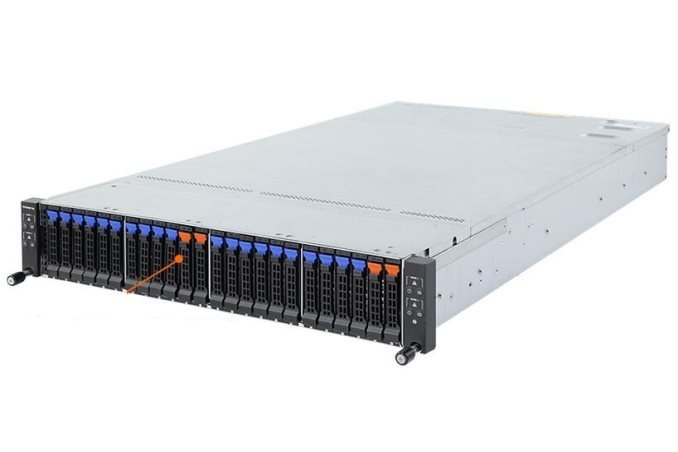
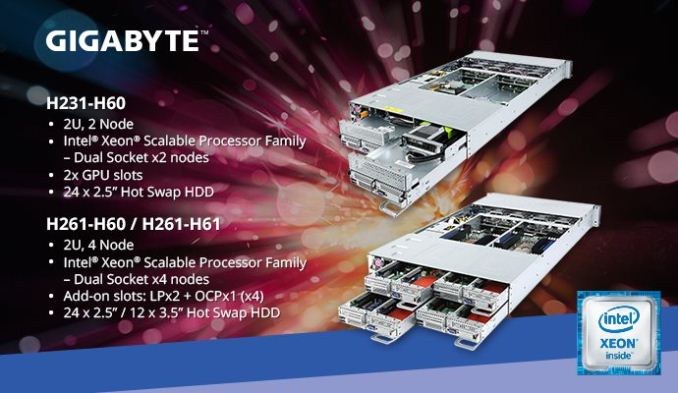
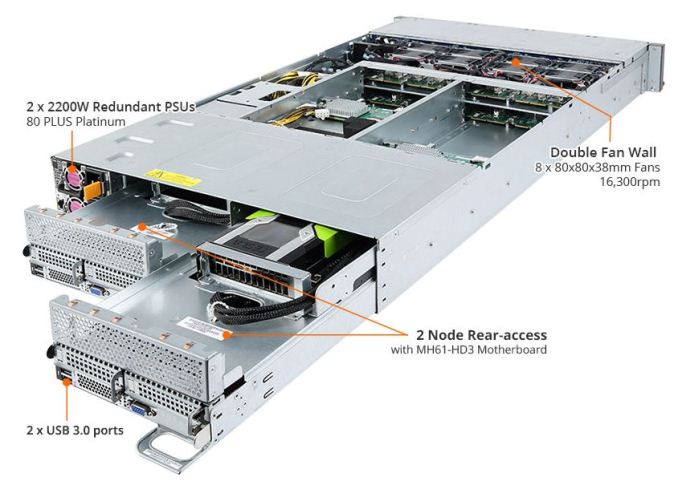
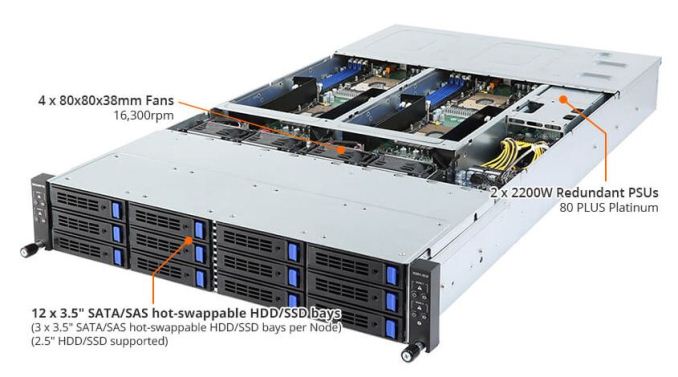
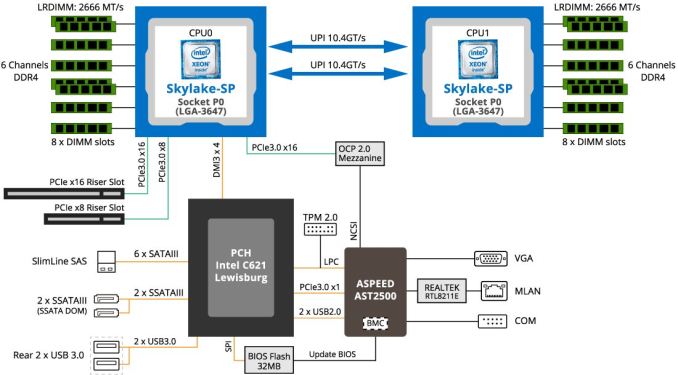
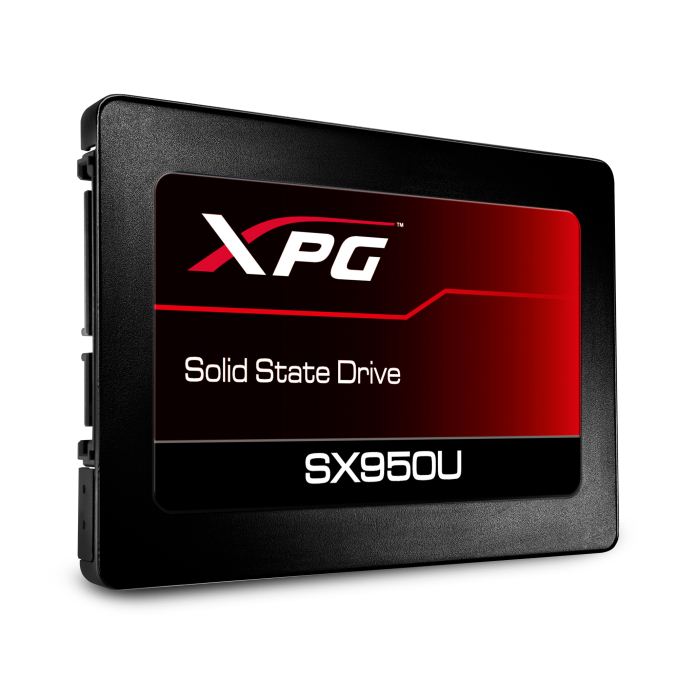
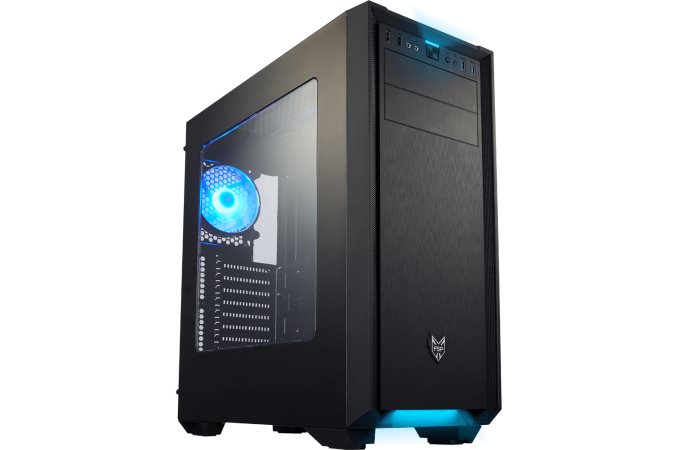
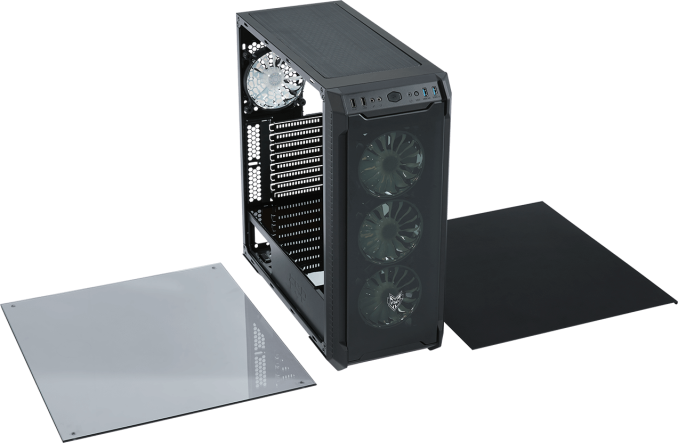
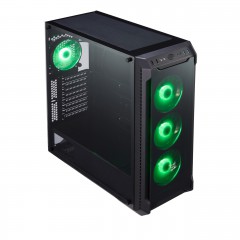
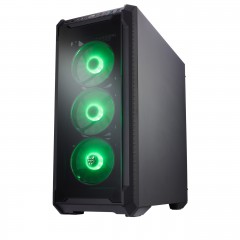
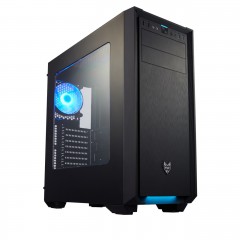
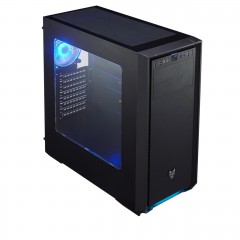
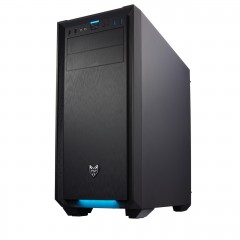
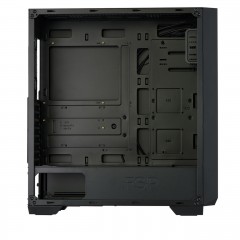
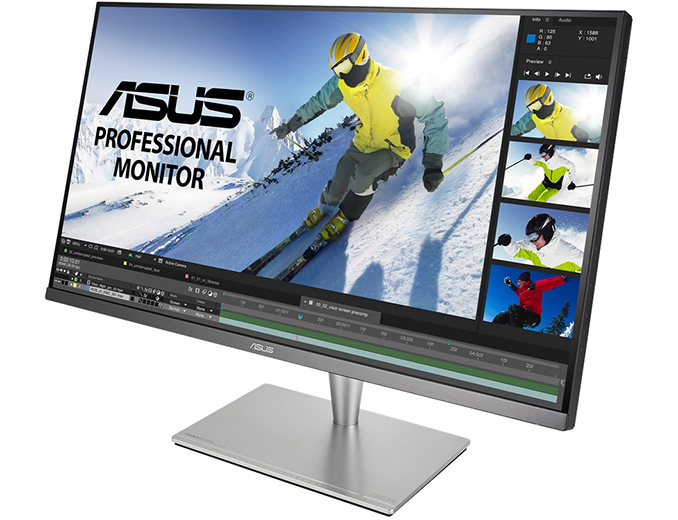
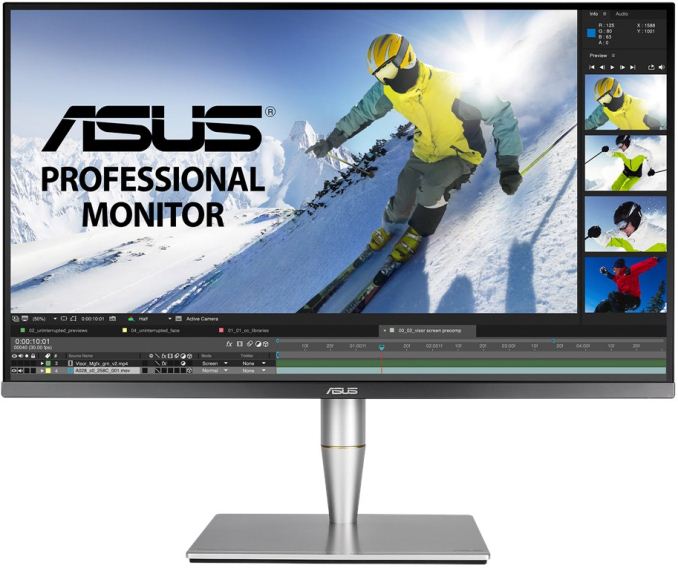
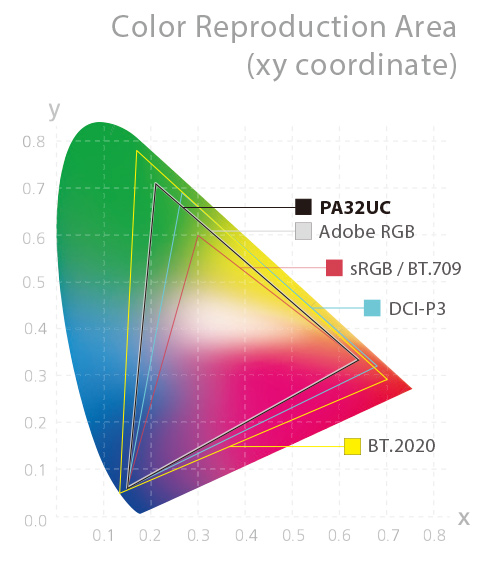
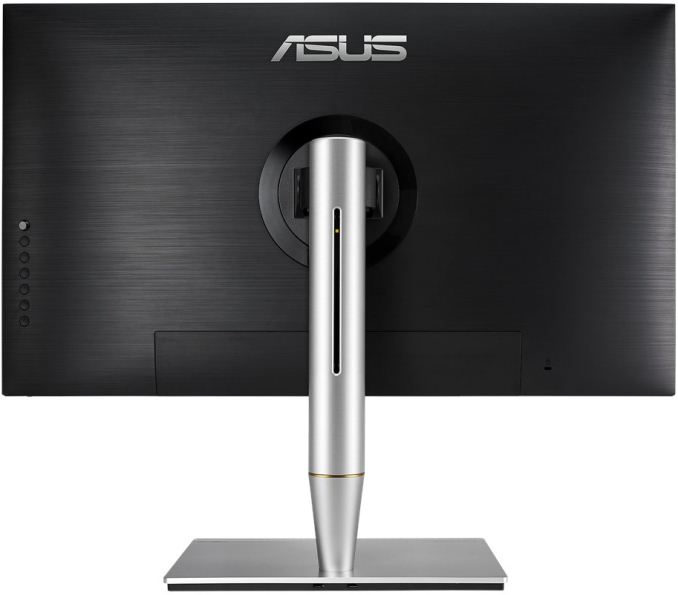
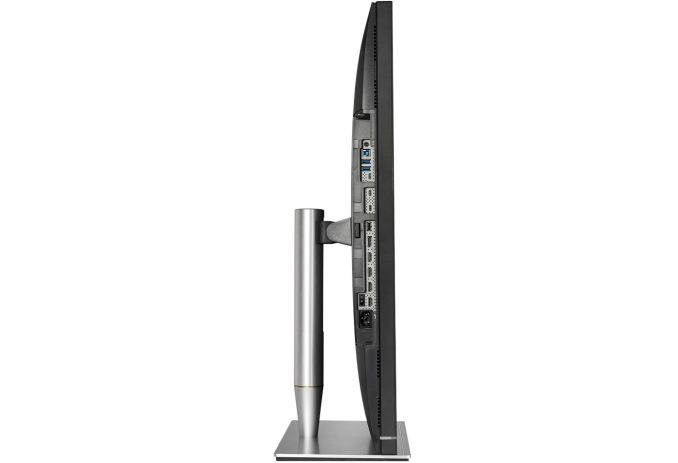

















Bookmarks